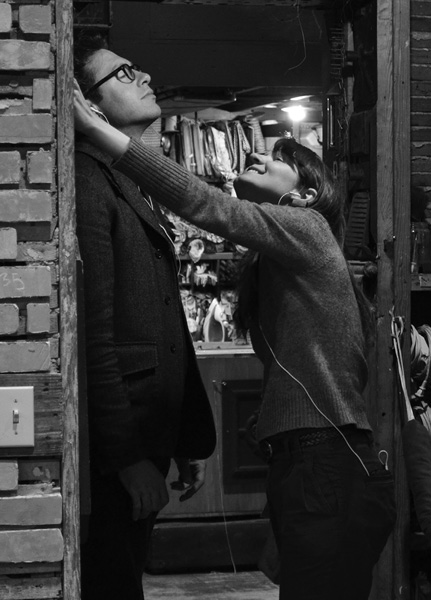
ELSEWHERE THE PLAY, PERFORMED BY YOU
first performed on April 13, 2012
Elsewhere Artist Collaborative, Greensboro, NC
performed 20 times in 2012
BEN GANSKY
Aislinn Pentecost-Farren, Walker Tufts
Brooklyn, NY
201790751b201790751e201790751n201790751g201790751a201790751n201790751s201790751k201790751y201790751@201790751g201790751m201790751a201790751i201790751l201790751.201790751c201790751o201790751m
bengansky.com
ELSEWHERE THE PLAY, PERFORMED BY YOU
BEN GANSKY
“Elsewhere the play, performed by you” is a work of autotheatre, a self-performing play for two participants. Made for and about Elsewhere Artist Collaborative (a space in Greensboro, NC), the piece travels the memories and mysteries of the building’s 50+ years as a repository for cultural surplus. The two participants are given headphones and audio devices, through which synched audio tracks prompt them to move about the space and engage with each other and their environment through dialogue and gesture. The play uses audio from the Elsewhere archives to reconstruct moments from Elsewhere’s history along with narration and participant-performed reenactments. Participants are introduced to Elsewhere’s basic conceptual framework: it’s a former thrift store pretending to be a museum, because things are different if they’re art. Within “Elsewhere the play,” the participants are engaged not just in seeing art, but in making art, or more precisely, in being art. What changes about the space if it is “art?” What changes about them if they are “art?” Who decides, and how, what is art?
Participant A’s audio track: “Say to your partner, ‘You know what Andy Warhol said about art?’” [they do so.]
Participant B’s audio track: “Say to your partner, ‘Art is whatever you can get away with.’” [they do so.]
Both participants’ audio track: “Give your partner a high five.” [big orchestral flourish]
The piece then moves on to the story of “The Lost Poem of Elsewhere,” in which the participants first hear the story narrated, then gradually embody its characters. Sent to different locations in Elsewhere’s space, the participants take turns spying on each other unknowingly performing “choreography” that seemingly underscores the music and poetry heard by the “spy.”
The piece ends with a meditation reflecting on the motives of Sylvia Gray, the woman whose 50-year hoarding habit (rationalized by the fact that she was running a thrift store) created the massive collection of objects that constitutes Elsewhere’s Collection.
Unlike most performance-based pieces, given that this piece has no “cast” as such, it is continuously available for performances at Elsewhere whenever the museum is open.